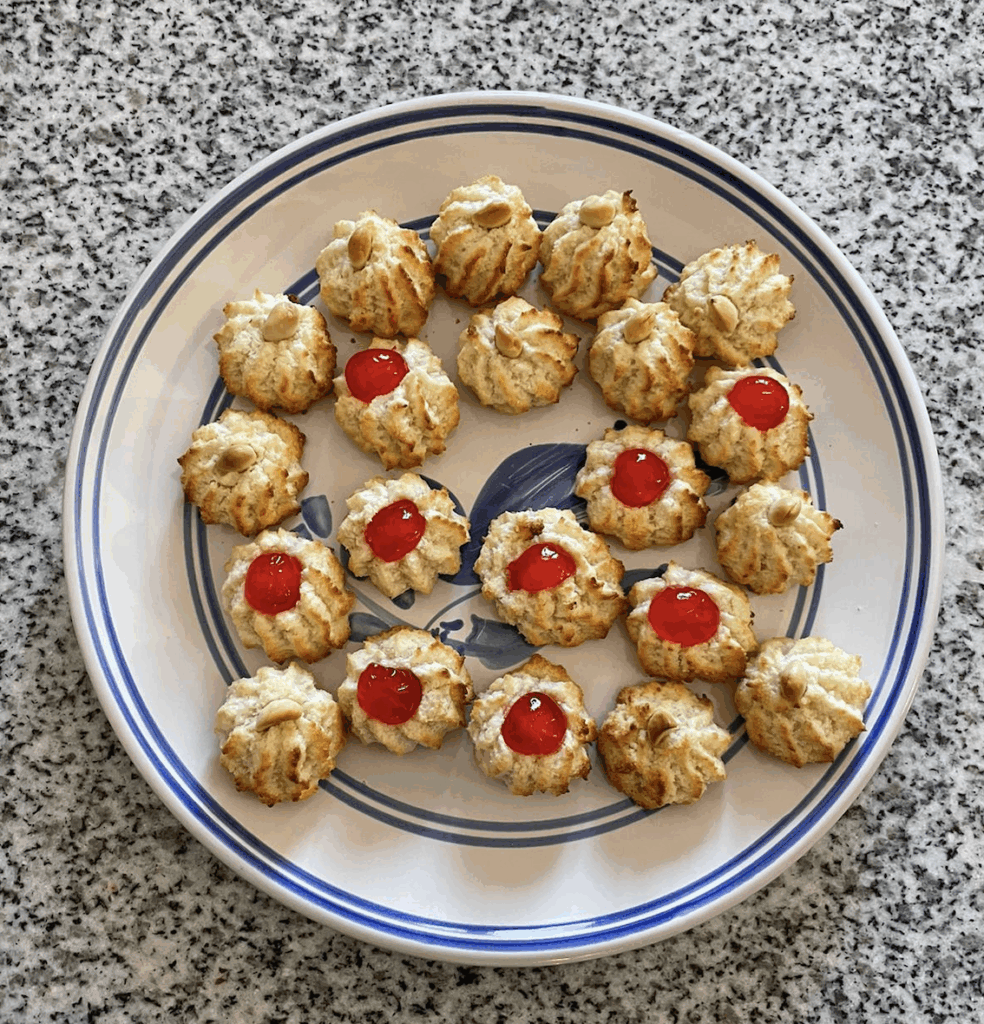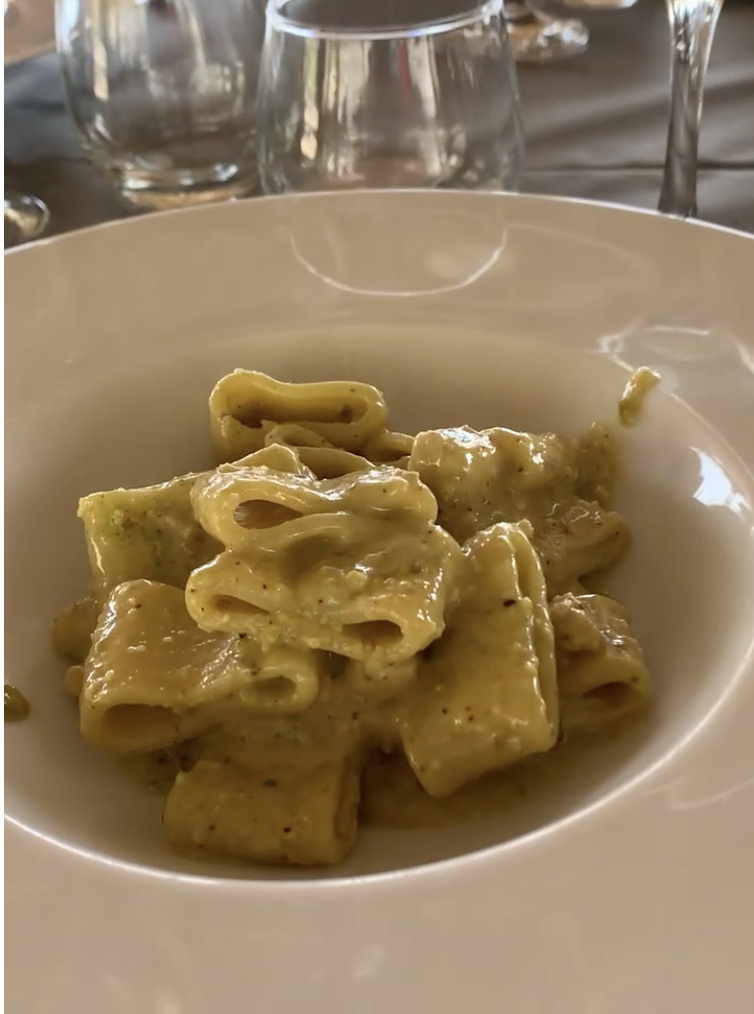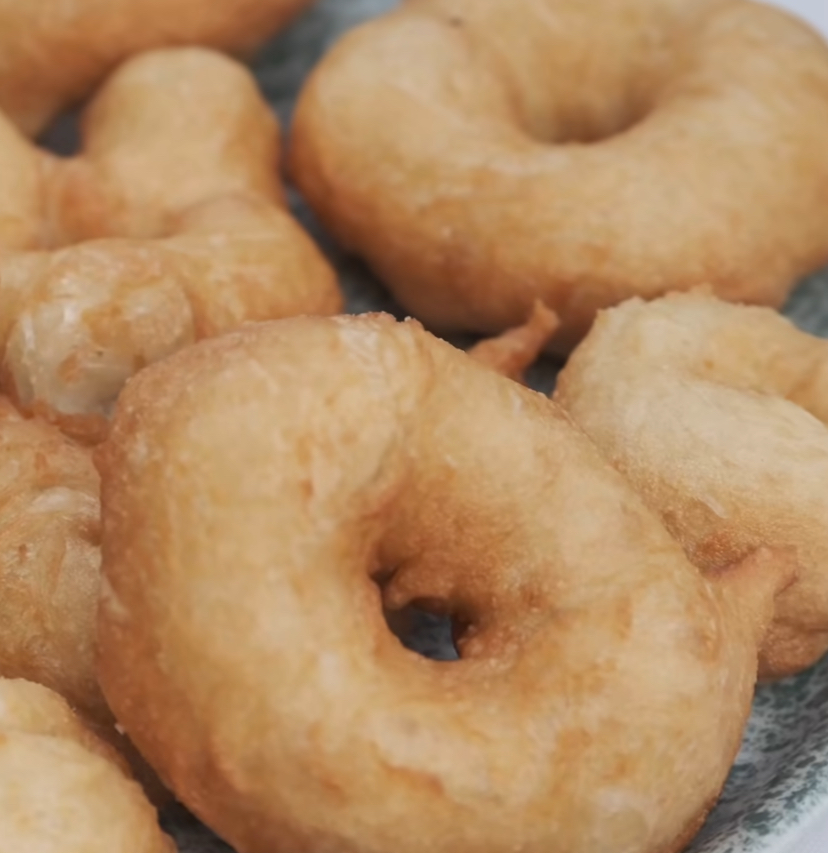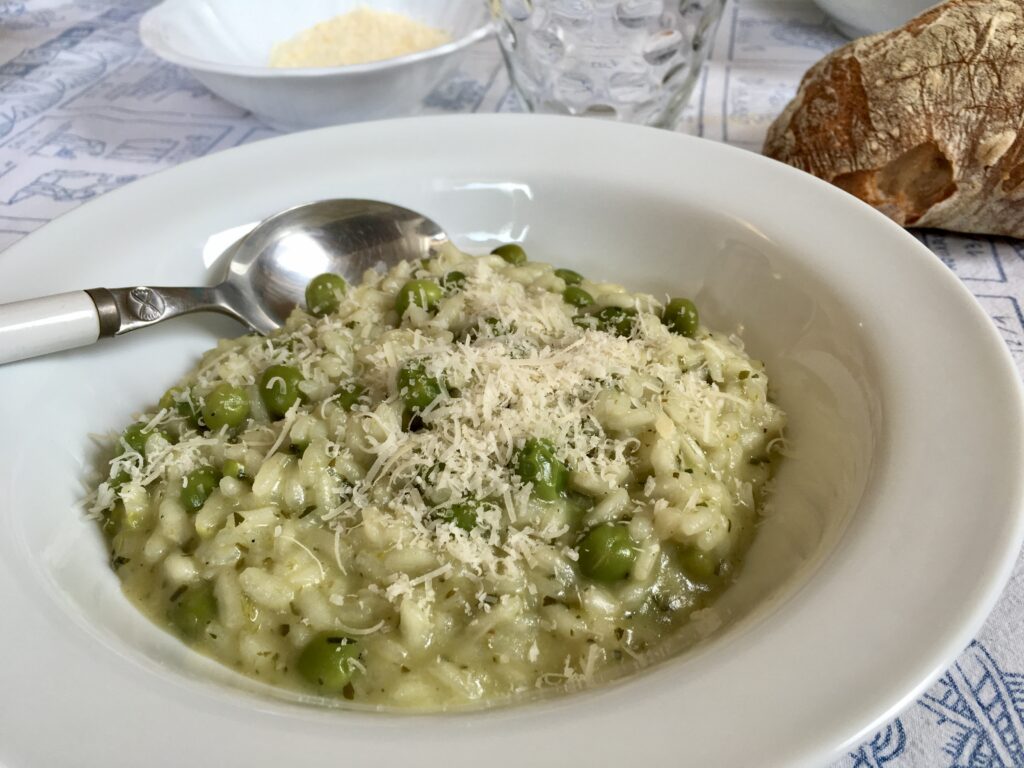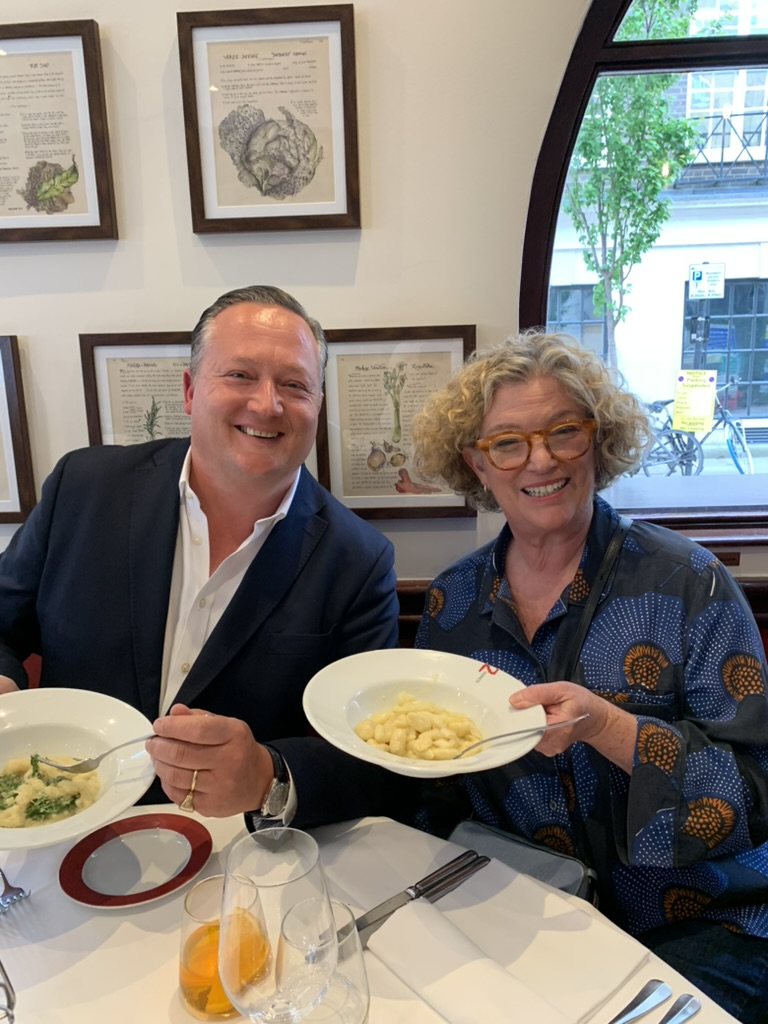
2 Veneti Restaurant is a cosy Italian restaurant in central London. Here, restaurant owners Simon and Patrizia Piovesan introduce their customers to authentic Venetian specialities and honest Italian dining with understated elegance. With an incredible menu featuring Venetian classics, and modern twists on old-school dishes, there’s something for everyone in their selection.
They were kind enough to invite in the Pasta Grannies team for an aperitivo and a cooking session with their head chef, Stefano. We discussed Venetian cuisine and some special seasonal ingredients: bruscandoli and white asparagus.
Highlights of our conversation can be found below.
Vicky: Hi Simon, thank you so much for inviting us in today. Can you tell us a little bit about what inspired the restaurant? Why did you decide to start the business?
I’ve been here for 18 years. I was raised in a very small town. My father obviously was Italian and grew up with a passion of because there wasn’t really much to eat in those days. My parents enjoyed a lot eating out and by the age of 20 I was here. I opened this restaurant with a very good friend of mine and for various reasons we went our different ways but I have a great team and am grateful to call this my job!
Vicky: How would you characterise it this place? How does Venetian food differ from other Italian cuisine?
SImon: That’s a good question. It’s hard to say exactly but I think it’s that here at 2Veneti we focus on two types of flavours. The sort of simple ones and then the more elevated ones. Venetian dishes are typically quite sweet and sour, that’s very typical of our region. Veneto has a port and there’s a lot of different people who used to visit it, so you’ve got all these influences that contribute to the dishes. As well as the produce growing both with rivers, sea, and greenery; it’s very diverse in terms of flavours and styles.
Vicky: [points to a large plate of long stringy green vegetables and white asparagus] Talking of typical dishes and greenery, can I ask you what it is we have in front of us today?
Simon: Yes, this is white asparagus, and the reason it’s white is because when it grows, it doesn’t seen any light, which means there’s a different, sweeter taste to it, instead of the bitterness you get from the green. They have a milder flavour, more delicate. They’re delicious. It’s rumoured they started as an accident because one time the weather meant that they had to try growing them underground. Now they’re grown all over Europe and are a rare delicacy?
Vicky: And how would you normally cook asparagus?
Simon: The traditional Veneto way I grew up with was to serve them with boiled eggs. Very plain. I have memories of everything being over boiled when I was younger! They were typically home boiled and then you’d mix the hot asparagus and the eggs; clean them up and mash them with a with a fork and then just put salt, pepper, and vinegar on them.
On our menu though, Chef Stefano has done a modern twist which is FAR superior. Two types of asparagus (green and white), blanched. We take the yolk out separately and decorate it in a perfect-picture type of presentation. It’s a clean, refined dish that is a nod to the traditional simplistic way of eating it too. One of my favourites in Spring!
Vicky: And you also have bruscandoli here too? What exactly is it? What does it taste like?
Simon: It’s a very precious, wild foraged green vegetable. It’s dependent on the weather conditions very, very much and the season is super short. You can buy these, sometimes called ‘wild hops’ – like those used in beer. They are hard to find in UK but much more plentiful in Veneto. Farmers where I came from would call it ‘wild asparagus’ but they’re not always the same thing. They have a very mild but slightly bitter finish. Almost like you could taste the beer!
And a bit like with the white asparagus, although it’s more bitter, it’s still delicate so you don’t want to add it to too much sauce or something or you’ll completely lose the flavour. The traditional dish where I come from is riso di buscandoli which is white rice with a vegetarian or a very light chicken stock, some dried cheese, in a risotto with the vegetable.
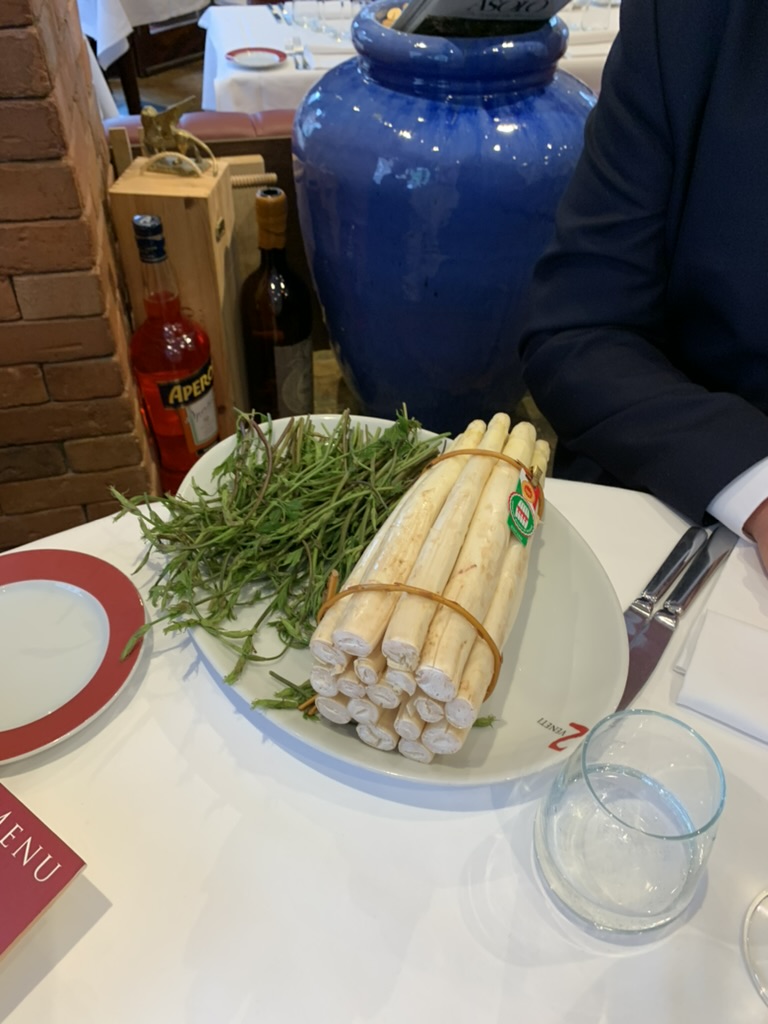
Vicky: So tell us about your grandmothers and what influenced them and you in cooking?
I had this lovely old aunt who was actually my father’s aunt. I always called her aunt because she treated me like a direct son; we used to go foraging in the countryside to collect wild asparagus, like the stuff we’ve just been discussing. They grow close to rivers and water, so it was always a very beautiful day out. Then we’d prepare them in salads and risotto together. That’s stuck with me and one of the reasons I wanted to source this for you tofay.
Vicky: And since at Pasta Grannies we always want to know about pairing things with pasta. What do you think the best pasta shape to pair with asparagus is?
Simon: Good question! I’d chop it up and slightly blanch it. Make sure you use butter and make a sort of creamy sauce and then a plain, egg-free gnocchi or something is a great option. Perhaps a pinch of nutmeg, and a lot of salt and pepper to season. It’s something we’re serving tonight for you!
Vicky: And talking of the menu, what is your favourite dish on there?
Simon: Well we have a lot of good meats that we get imported from the Veneto region. A lot of the salamis and things we sell here come from there directly. Vitello tonnato is a traditional dish that is very popular and so is spaghetti Vongole. But I’d suggest to anyone coming here it would have to be to try our Bigoli Salsa. It’s with anchovies and onions. It doesn’t sound very exciting but it’s fantastic. So rich, salty from the anchovies, and sweet from the onions. A classic Veneto meal!
Vicky: And what are you drinking, or what would you suggest drinking before or during a meal at 2Veneti?
Simon: Well, Veneto is sort of the home of Spritz; something which is now really popular. It actually used to be water and wine because what they were serving wasn’t always very drinkable, but that’s evolved over time to leave Venice as the holy grail of Spritz culture. I love a glass of crisp white wine. Veneto borders Lombardia which is a region filled with nice, light, crisp, easy-drinking wines.
Vicky: And tell me, are the rumours true that the Venetians are the biggest drinkers in Italy?
Simon: [without hesitation] Yes! There is a lot of wine produced there but I am not sure that’s a good excuse. It’s a sensible kind of drinking, you know….starting a breakfast! It originates from the farmers who would need some courage to go out into the fields in the winter months. Breakfast would be a sandwich with a glass of sweet wine, almost like fruit juice. It gave them sugar, and a nice start to the day and well, I suppose the drinking early part has stuck even with those working in industrial and high-end business as well as on the farms!
Vicky: And what other Italian regions do you like the food from?
Simon: Well, my wife Patrizia is from Sicily. And so we love artichokes. There is a small island outside of Veneto where they grow them but you find them a lot more readily in Sicily. It’s one place our palettes really overlap. (For example, unlike me she doesn’t like gnocchi!) You can stuff artichokes with garlic, parsley and olive oil. And there’s a famous tradition of grabbing your artichoke and whacking it to get all your anger out.
After years of being married to my wife, I know that if I ever need to make her happy, I just have to find a good artichoke. The only complaint she usually has is that I don’t bring home enough of them!
Vicky: Well, that sounds absolutely delicious. I think we’ll be trying that too. Thank you for having us at your table, and sharing your stories and seasonal produce with us. It’s been a pleasure!
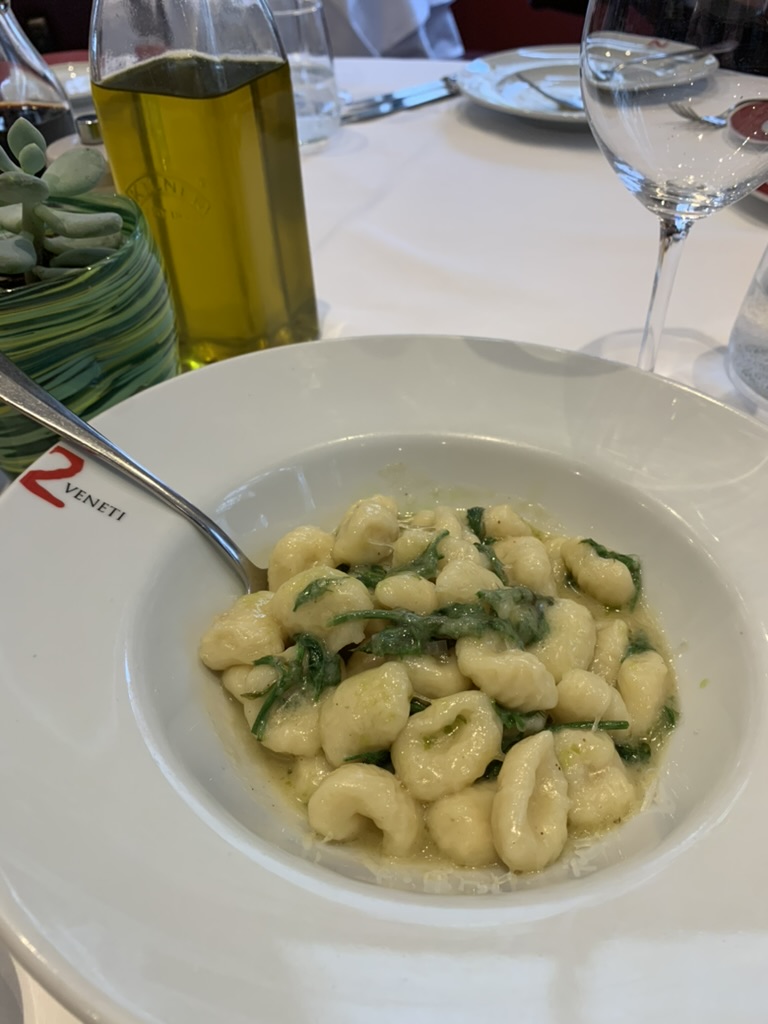
2Veneti is located at 10 Wigmore St, London W1U 2RD
